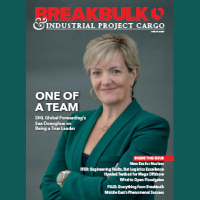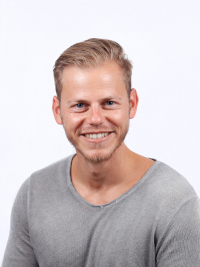Breakbulk Movers Rise to Challenge as Seminal ITER Project Hit by Delays
_1.jpg)
By Amy McLellan
 You don’t attempt to build a sun on earth and not expect some technical problems along the way.
You don’t attempt to build a sun on earth and not expect some technical problems along the way.
That has certainly been the case with ITER, the long-running international project to harness the power of fusion – the nuclear reaction that powers the Sun and the stars – to provide clean, carbon-free sustainable energy here on earth.
ITER, originally the International Thermonuclear Experimental Reactor, has been designed as the key experimental step between today’s fusion research machines and tomorrow’s commercial fusion power plants. It has been making steady progress at its 180-hectare site in Saint Paul-lez-Durance in southern France but events of recent years have hit budgets and timelines.
ITER is a truly international project, bringing together China, the European Union, India, Japan, South Korea, Russia and the U.S., with the manufacturing of components spread across specialist factories spanning three continents, designing and building the 1 million components and 10 million parts.
Project assembly of the massive components in the tokamak pit began in 2020, with French President Emmanuel Macron hailing the international energy program as a “promise of peace” and then ITER Director-General Bernard Bigot saying the team “felt the weight of history.”
At the time, the ITER team was targeting first plasma in December 2025 and deuterium-tritium operations (the fusion reaction) in 2035. Those targets now seem hopelessly out of reach.
Covid-19 and its related travel restrictions inevitably created logistical headaches for those charged with delivering the components across international borders, while the outbreak of war in Ukraine has helped ratchet inflationary pressures across the world, adding to supply chain issues not to mention inflating the project’s costs.
Then there are the technical and regulatory delays. A research trip by members of the U.S. congress to ITER in October 2022 shed some light on the extent of these, noting that an existing 35-month delay to first plasma could prove to be a cumulative five-year delay following the discovery of flaws in some major components.
This will have inevitable implications for the budget, which remains opaque due to the different ways the participating countries account for their share of funding. The U.S. Department of Energy, however, has speculated the costs could well have swollen to US$65 billion, though this is disputed by ITER.
TECHNICAL PROBLEMS
Indeed, the complications have come thick and fast for ITER over the past 12 months. Early in 2022, the French nuclear safety regulator ASN put the tokamak welding on hold due to vacuum vessel “nonconformities.” On a project where the permitted deviations on a 300-ton part are measured in mere millimeters, there is no scope for error.
ASN also said the two-meter-thick concrete radiological shielding to be installed around the reactor is inadequate to protect personnel once experimental operations get underway in 2025, and raised concerns that any increase to the shielding could cause the total weight of the reactor to exceed the 140,000-ton capacity of its earthquake-resistant foundation.
Then, in November 2022, two-and-a-half years into the project’s machine assembly phase, it was announced that defects had been identified in two key tokamak components: the thermal shields and the vacuum vessel sectors. The new director-general, Pietro Barabaschi, who was appointed following the death of Bigot in 2022, said “there was no scandal here,” and such issues were to be expected in any industrial venture involving first-of-a-kind components.
“If there is one ‘good thing’ about this situation” Barabaschi added, “it is that it is happening at a moment [when] we can fix it. The knowhow we are acquiring in dealing with ITER’s first-of-a-kind components will serve others when they launch their own fusion ventures.”
Perhaps, understandably, given the high level of international collaboration, the project team is reluctant to point fingers for the technical problems. “The technical issues we discovered are not a problem of a specific workshop,” said Laban Coblentz, head of ITER communication.
“The reasons lie more in the complexity of these first-of-a-kind components which underwent a 5-year manufacturing process including repeated heating and cooling cycles. So yes, it could be that other vacuum vessel sectors are facing similar problems, but now we are aware of the risk and can react and recover accordingly.”
The problem was identified on three, yet-uninstalled vacuum vessel thermal shield panels – there are 27 such panels in all. The thermal shield panels have been impacted by “stress corrosion cracking” that has affected the cooling pipes welded to the component surface.
During the manufacturing process, chlorine residues were trapped in tiny pockets near the welds, causing cracks up to 2.2 millimeters deep. The decision was taken to remove and replace all cooling pipes (23 kilometers in total) from the panels.
“After the washing of the cooling pipes some chloride inadvertently remained inside and reacted with the austenitic steel the pipes are made of,” Coblentz explained. “That made the steel vulnerable to chloride stress corrosion.”
A different steel formulation will be used in pipe fabrication that will be more resistant to corrosion and different welding processes will be used. There is also the possibility that “a few” panels may be re-manufactured, which could prove cheaper than repairing them.
FROM ASSEMBLY TO DIS-ASSEMBLY
The ITER management is working to the assumption that the crack issue in the cooling pipes could be systemic, affecting all thermal shield components – including the lower cryostat thermal shield, which has already been installed.
Three vacuum vessel sectors have also been found to have dimensional non-conformities, one of which forms the core of the “module” already in place in the assembly pit. These are among the biggest components of the machine, as high as a five-story building and as heavy as an Airbus A380.
The repairs are therefore going to involve some complex logistics, with reshuffles of these vast pieces of equipment to create room for repairs. Fortunately, there are many storage facilities and laydown areas all around the worksite to facilitate this work.
The duration and cost of the repairs cannot be estimated, but as director-general Barabaschi admitted, it will be “a substantial amount of time… and time always costs money.”
COMPLEX TRANSPORTATION GOES TO PLAN
Of all the things that could have gone wrong, however, it seems the trans-continental shipment of extremely heavy, large and yet perversely delicate components and instruments has been relatively smooth. This is partly down to rigorous planning, preparation and the expertise of the specialist heavy load contractors called up to ship the components to the south of France.
Delivering these one-of-kind highly sensitive components to southern France from specialist facilities as far-flung as Russia and Japan was something of a unique challenge – but one that project cargo specialists took in their stride.
 “These are very large components, but the size is normal for us,” said Martin Jung, manager of chartering at Bremen-headquartered Harren Group, which owns SAL Heavy Lift (a member of the Jumbo-SAL-Alliance) and which last year completed its acquisition of Intermarine.
“These are very large components, but the size is normal for us,” said Martin Jung, manager of chartering at Bremen-headquartered Harren Group, which owns SAL Heavy Lift (a member of the Jumbo-SAL-Alliance) and which last year completed its acquisition of Intermarine.
“This is what we do, it’s our core business.”
The company, working with FrancNav, was in charge of transporting the specialist components on the long journey from Asia to the ITER site in the south of France.
“The client was very cautious, because these components are unique,” Jung said. “There is only one of each available so there are huge safety margins to protect them during transit. We started planning from scratch, from the bottom up, with the simple question: how do we protect the cargo against any damage? We took a long time to build and test a solution.”
One issue was that the giant components are very sensitive to accelerations during the sea journey. “We had to be very careful about bad weather and risk management,” Jung said. “If there was bad weather, we had to deviate or slow down, and thankfully we kept the acceleration within the limits.
“Lifting was another big challenge, as we weren’t sure how to do this. But we found a way, the engineers solved this, working with the masters and crew, and the client was really prepared,” he recalled. “We had a great dialogue and that makes all the difference.”
PANDEMIC CHALLENGES
Sea journeys weren’t the only tricky element. Life was made more challenging by the arrival of Covid-19 in 2020. The shipment of toroidal coils from Italy – where they were built at ASG Superconductors near Milan and the SIMIC facility at Marghera, Port of Venice – was the first real pandemic test.
“We were the first port in Europe to be under a Red Zone,” said Pino Musolino, president and CEO of the North Adriatic Sea Port Authority, which handled the shipment of the Italian contribution.
“Overnight we had to invent rules and procedures we had not had to envisage before to keep everyone safe. It complicated things, but we were quick enough and wise enough that we were able to manage everything and never had one day of disruption or lost job during the lockdown.”
These journeys were not just sea voyages, but often involved road, river and sea. Take for example the journey of the poloidal field coil #1, which measures nine meters across and weighs in at 160 tons (and this is the smallest of the six ring-shaped magnets that circle the tokamak).
It was built at the Sredne Nevsky Shipyard in Saint Petersburg, from which it departed in November 2022. It sailed down the Neva River to the open sea through the Gulf of Finland. From there it traversed the Baltic Sea, the North Sea, the Atlantic and the Mediterranean to reach Marseille’s industrial harbor.
As one of the widest highly exceptional loads to make the 105-kilometer-long overland journey from Marseilles to the ITER construction site, the PF#1 posed something of a project cargo challenge, as it had to steer through plane-tree-lined roads, over bridges and an extremely narrow passage between two small cliffs on the approach to the ITER construction site.
As a result of these challenges, it took the 288-wheel self-propelled modular trailer and its associated road convoy of specialist tractors and police four rather than three nights to make the journey along a route that has seen roads widened, bridges reinforced and intersections modified in preparation for the exceptional size and weight of some of the tokamak components.
LEARNING LESSONS AND LOOKING AHEAD
For now, the focus is on understanding and remedying the technical issues that have hit the project. ITER itself is putting a brave face on events, noting that as a research project this is the time to experience a whole range of challenges and setbacks, which can then be communicated to the scientific community so they can take precautions when dealing with the same type of assemblies.
These projects are already underway. South Korea, for example, is planning to leverage learnings from ITER to begin building its own commercial nuclear fusion reactor with capacity of 500 MWe after 2035, with first electric power around 2050.
ITER may be beset by difficulties right now, and its ballooning budget may create a political headache in fiscally challenging times, but it is still a beacon for scientific endeavor and what can be achieved when countries can pull together in search of a solution to one of the greatest problems facing humanity: clean, abundant energy.
Freelance journalist Amy McLellan has been reporting on the highs and lows of the upstream oil and gas and maritime industries for over 20 years.
TOP IMAGE: loading a poloidal field coil destined for ITER. CREDIT: ITER
